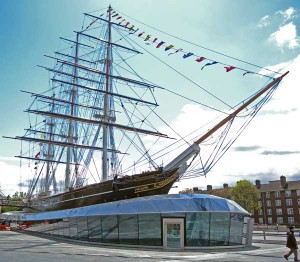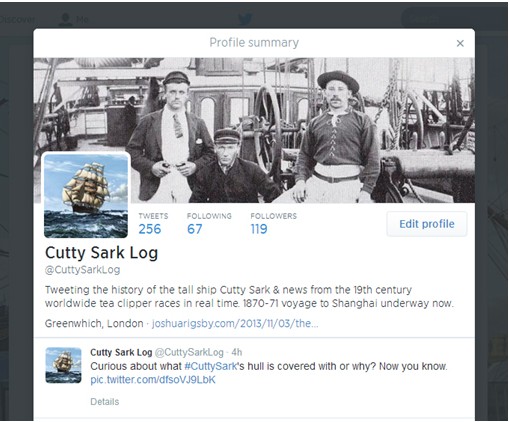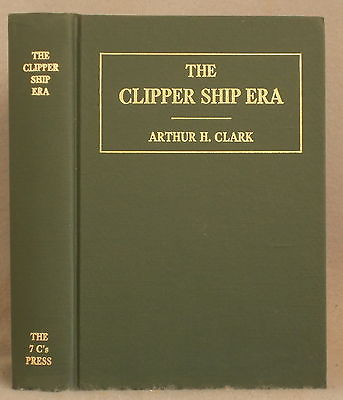Arguably some of the most dramatic nautical events of the 19th century were the famous “tea clipper races” that pitted merchant companies against one another in a bid to see who could bring tea from China to London the fastest.
With the dissolution of the British East India Company, the London tea trade had changed dramatically. Under the Company tea could be shipped slowly, arriving when the trade winds were favorable and conditions ideal. When the Company’s monopoly was dissolved, however, enterprising merchants soon discovered that the freshest shipment of tea commanded the best price.
Thus, the tea clipper races were born. Departing London together, these clipper ships would sail around Africa to ports in China, arriving just in time to collect the freshly plucked harvest. The cargo would be loaded overnight, with Chinese junks shuttling the precious boxes from the shore. As soon as the tea was secured the clippers would leave again for London, a trip that would take them three months, traversing 14,000 miles, 3/4ths of the way around the world. The ships would battle for position for weeks, stretching every inch of canvas for a possible advantage, and arriving in London within minutes of each other.
Once the clippers arrived in the harbor they were pushed to the dock by a tugboat. The crew would throw a crate of tea onto the dock as soon as possible. A young boy would scoop up the precious leaves and run to the trading house where a winner was declared and a price set.
Great fanfare and celebration marked the vessels’ return with thousands of people lining the shore to see them come in. Bets were placed. Fortunes won and lost. The crew of the winning ship was given an extra pound of silver for every ton of tea. The captain was given a percentage of the overall earnings, and a lifetime of bragging rights.
Treachery and sabotage were rampant among the vessels. One year a ship lost the race because its tug boat was conspicuously slow. Some ships were lost at sea.
This period in the mid 19th century marks the pinnacle of the age of sail in world travel. Records were set during this time that would not be broken until powered vessels took the sailing ship’s place. In the end, this majestic time was eclipsed by the steam engine and the opening of the Suez Canal. Slower steam-powered vessels could negotiate the Canal’s locks and avoid Africa entirely, while a sailing ship couldn’t.
By the late 1800s racing clippers were relegated to the margins of history, serving as workhorses in the wool trade, or as training vessels for Western navies. In time, nearly all of these magnificent ships were lost except for the now-famous Cutty Sark, now on display in London.
I am currently researching these fascinating races for an upcoming series of novels. As I do, I will post my findings to a brand new Twitter account titled: @CuttySarkLog that tweets excerpts from the ship’s log, the clippers’ coordinates, and history of the races in “real time.”
The Cutty Sark’s 1870 voyage to Shanghai departs 8 November! Click here to follow her progress.





![Movie Review: In the Heart of the Sea [Part 2]](https://joshuarigsby.com/wp-content/uploads/2015/12/InThe-Heart-of-the-Sea-Movie-Poster.jpg)
![Book Review: In the Heart of the Sea [Part 1]](https://joshuarigsby.com/wp-content/uploads/2015/12/In-The-Heart-of-the-Sea-Cover.jpg)
I think you’ll enjoy my book China Jewel. Being an Eastern Shoreman (Maryland) (where the Batimore Clipper was invented) and having done a lot of research on the old races including the one between the american John Gilpin and the English brig in Canton, I wrote this book. I think you’ll find much to enjoy. Somewhere along the line I hope to see the Cutty and I always send all my friends who travel to enjoy her. Tommy
Thanks! I’ll definitely check it out.
Ahoy there Josh-
I won a trip to London back in the mid ’90’s and I told my wife that we must go to Greenwich to see the Cutty Sark. You see, I am a true scale ship modeler and I have built many models of the Cutty in the past 40 + years of being a model shipwright.
I have to ask you sir, just what is that blue thing obstructing the beautiful hull of the Cutty. Is that the main entrance to the ship. It takes away from the ship, that’s my opinion, and I’m sticking with it!
Frank Ryczek, Jr.
Maritime Artworks Linited
Jacksonville, FL
Ahoy there Frank,
You are certainly not alone in that assessment. It seems a great many people are not fans of the glass dome that surrounds the hull. The glassed-off section indeed serves as the main entrance to the building, it holds a gift shop, and a little cafe and event space at the bottom. Though, I certainly understand why it raises ire, it doesn’t trouble me so much personally. It’s quite lovely to walk beneath the keel and observe the shape of the hull and the copper plating from beneath. It also frees up space for them to host larger events rather than on the deck of the ship out in the notoriously English elements. I am not an architect, nor am I a ship modeler, however, so I will defer to experts in those fields as regards good taste in the matter. 😉
Thanks for dropping by, Frank!
Joshua